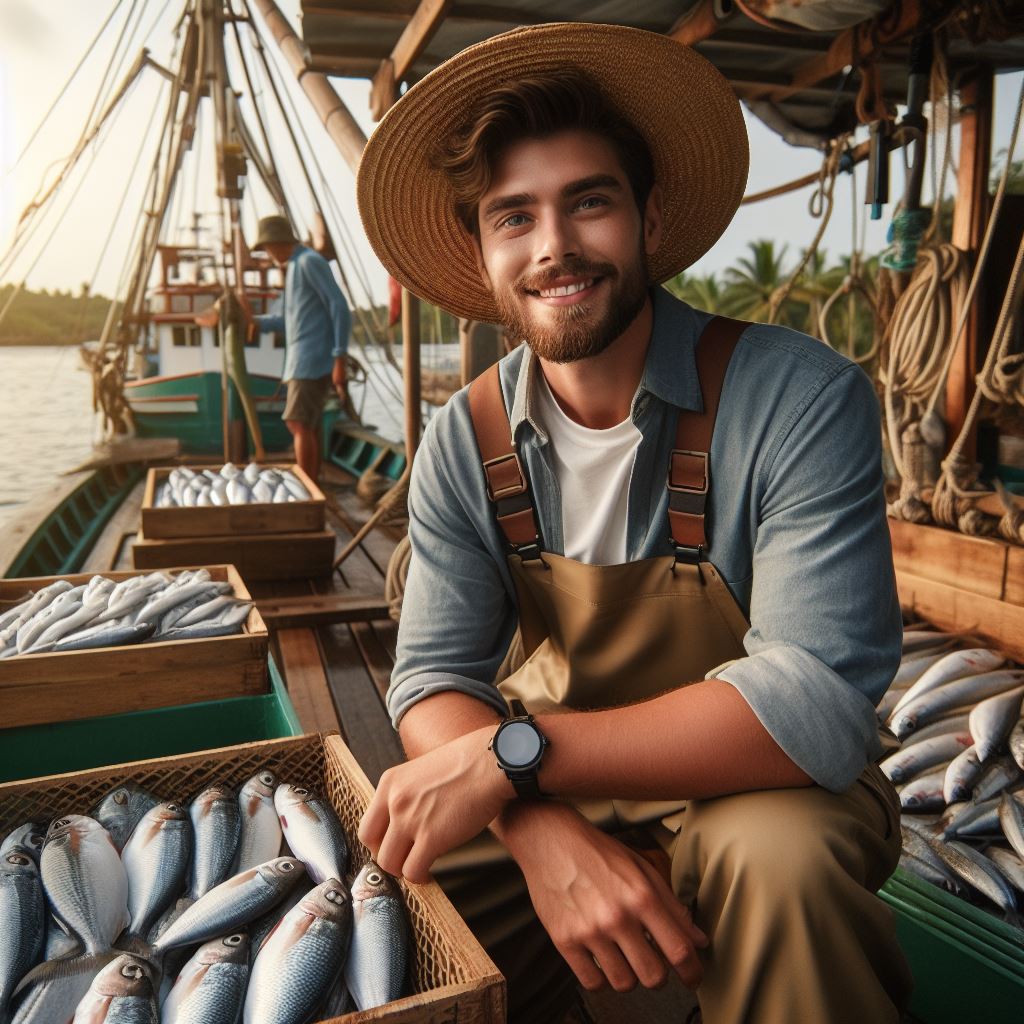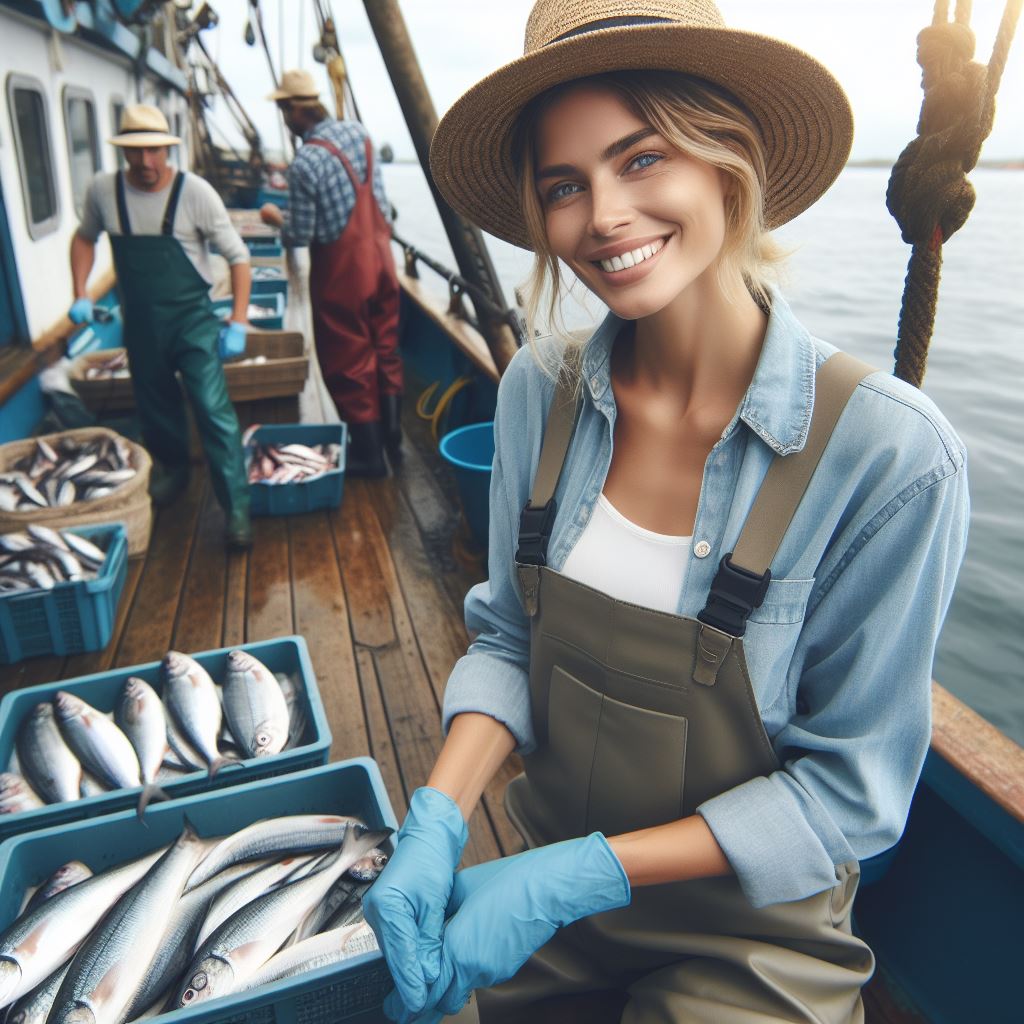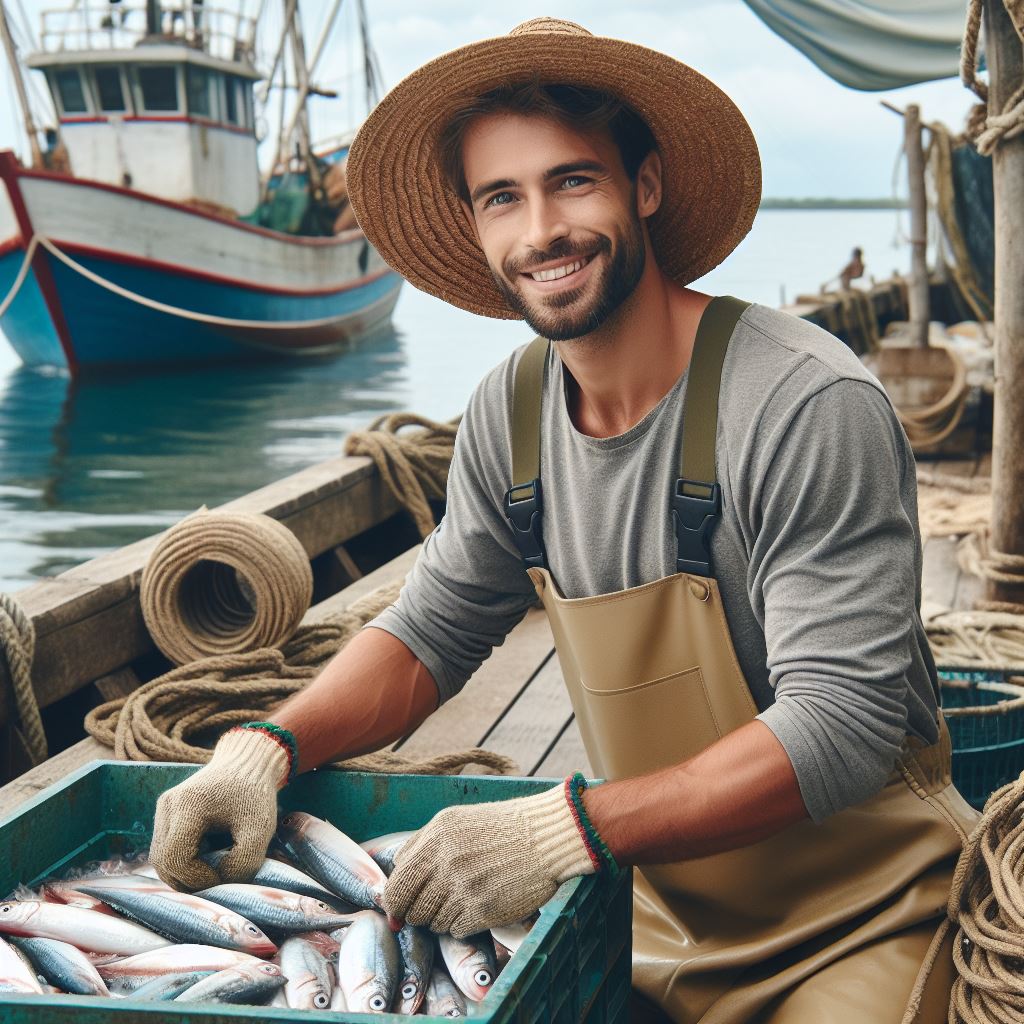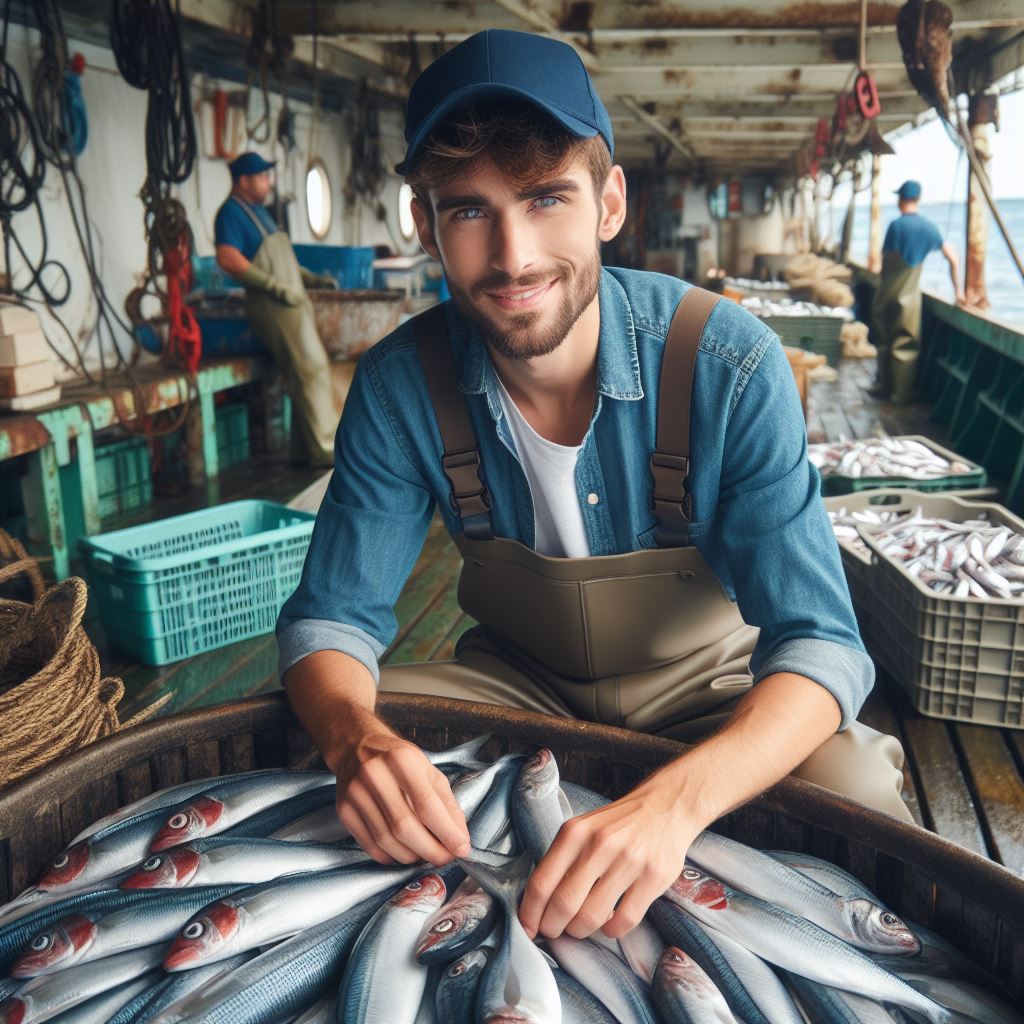Introduction
Fishing is a beloved activity in New Zealand, but it can also be incredibly perilous.
The serene beauty of the ocean often hides the dangers that lurk beneath.
Every year, many fishermen face life-threatening situations, making safety measures vital for their survival.
The unpredictable nature of the ocean can quickly turn a fishing trip into a nightmare.
Harsh weather conditions, treacherous waves, and capsize accidents are just some of the risks fishermen face.
Without proper safety measures, these dangers can be fatal.
Equipping fishermen with the knowledge and tools to protect themselves is of paramount importance.
The implementation of effective safety measures not only safeguards their lives but also promotes a more sustainable fishing industry.
One crucial aspect of safety is ensuring that fishermen have access to appropriate personal protective equipment (PPE).
Life jackets, harnesses, and safety boots are essential items that can prevent drownings, falls overboard, and injuries caused by slippery decks.
Furthermore, regular safety training should be provided to all fishermen.
Educating them about emergency procedures, proper use of safety equipment, and first aid techniques is crucial for their well-being.
By promoting a safety-first culture, accidents can be minimized, and lives can be saved.
In essence, prioritizing safety measures for New Zealand’s fishermen is a matter of life and death.
The unpredictable and unforgiving nature of the ocean demands that precautions be taken to protect those who venture out to sea.
Personalized Career Consulting
Unlock your potential with expert career advice tailored to your goals. Get personalized guidance and actionable steps toward your dream career in New Zealand.
Get StartedBy implementing effective safety measures, we can ensure that our fishermen return safely to their loved ones after each fishing trip.
Overview of Fishing Industry in NZ
Brief history of the fishing industry
- The fishing industry in New Zealand dates back to the early Polynesian settlers.
- Commercial fishing started in the late 19th century with the introduction of European fishing techniques.
- Traditional fishing methods like handlines and nets were gradually replaced by modern technologies.
- The industry grew rapidly in the 20th century and became one of the most important sectors in the country.
Importance of the fishing industry to NZ’s economy
- The fishing industry is a significant contributor to New Zealand’s economy.
- It provides employment opportunities for thousands of people, both onshore and offshore.
- The export of fish and seafood products generates substantial revenue for the country.
- The industry supports the livelihood of coastal communities and contributes to regional development.
- Fishing also plays a crucial role in promoting tourism and attracting visitors to NZ.
Statistics related to fishing accidents and injuries
- Fishing is considered one of the most dangerous professions globally.
- In New Zealand, between 2010 and 2020, there were a total of 124 accidents reported in the fishing industry.
- These accidents resulted in 48 fatalities and numerous injuries, some severe and life-altering.
- The most common causes of accidents are equipment failure, adverse weather conditions, and lack of proper training.
- Despite regulations and safety measures in place, accidents still occur due to various factors.
Improving Safety Measures for NZ’s Fishermen
Fishing in NZ can be perilous, but steps can be taken to minimize accidents and protect the lives of fishermen.
1. Enhancing Training and Education
- Provide comprehensive training programs for new and experienced fishermen to increase their safety awareness.
- Emphasize the importance of understanding weather conditions, sea currents, and navigation techniques.
- Educate fishermen about the proper handling of equipment, emergency protocols, and first aid.
2. Regular Equipment Maintenance and Inspections
- Ensure all fishing vessels are regularly inspected for their seaworthiness and compliance with safety standards.
- Conduct routine maintenance checks on fishing gear, ensuring they are in good working condition.
- Replace worn-out or faulty equipment immediately to prevent accidents caused by equipment failure.
3. Implementation of Safety Regulations
- Continuously review and update safety regulations to align with the evolving nature of the fishing industry.
- Ensure that all fishermen are aware of and adhere to safety guidelines at all times.
- Establish penalties and consequences for non-compliance to encourage responsible behavior.
4. Encouraging Safety Culture
- Create an environment where safety is prioritized by all stakeholders, including fishermen, vessel owners, and authorities.
- Promote open communication channels for reporting and addressing safety concerns or near-miss incidents.
- Recognize and reward individuals and organizations that demonstrate outstanding commitment to safety.
5. Improved Emergency Response and Monitoring
- Enhance emergency response capabilities by conducting regular drills and simulations for different scenarios.
- Equip fishing vessels with advanced communication and tracking systems to facilitate quick response in case of emergencies.
- Establish a comprehensive monitoring system to track fishing activities and identify high-risk areas or practices.
By implementing these enhanced safety measures, New Zealand can strive towards minimizing fishing accidents and establishing a safer working environment for its fishermen.
This, in turn, will contribute to a more sustainable and prosperous fishing industry.
Read: Fishermen’s Tales: Stories from NZ Seas
Common Hazards Faced by Fishermen in NZ
Rough seas and inclement weather conditions
Fishermen in New Zealand often face the danger of rough seas and unfavorable weather conditions.
These conditions can make it challenging to navigate the waters and increase the risk of accidents.
Strong winds, heavy rain, and high waves can destabilize the fishing vessels, posing a threat to the safety of the fishermen.
Slippery decks and unstable fishing platforms
Slippery decks on fishing vessels can cause fishermen to lose their balance and fall, leading to injuries.
The constant exposure to seawater and fish slime can make the decks even more treacherous.
Unstable fishing platforms may shift unexpectedly, making it difficult for fishermen to maintain their footing.
Heavy equipment and machinery
Fishermen in NZ face the risk of injuries due to the operation of heavy equipment and machinery.
Tasks such as setting and retrieving nets, operating winches, and handling fishing gear require caution.
A momentary lapse in concentration or a failure to follow the proper safety protocols can result in accidents.
Transform Your Career with a Professional CV and Cover Letter
Stand out to employers with an ATS-optimized resume and tailored cover letter designed to match your dream role. Let us craft your job application materials for success!
Get StartedExposure to harmful substances
Fishermen frequently come into contact with harmful substances such as fuel, oil, and chemicals.
These substances, if not properly handled, can pose serious health risks to the fishermen.
Proper protective equipment and training are necessary to mitigate the dangers associated with these substances.
Long working hours and fatigue
Fishermen often work long hours, sometimes spending several consecutive days at sea.
This extended working period can lead to fatigue, impairing their ability to make sound judgments and react quickly.
Fatigue increases the risk of accidents and decreases the overall safety of the fishermen.
Lack of communication or emergency response systems
In remote fishing areas, fishermen may face difficulties in establishing communication with the mainland.
This lack of communication hinders their ability to receive timely weather updates or call for emergency assistance.
Furthermore, the absence of proper emergency response systems can prolong the time it takes for help to arrive.
In fact, fishermen in New Zealand face various hazards that jeopardize their safety.
These hazards range from natural elements such as rough seas and inclement weather to man-made risks such as heavy machinery and exposure to harmful substances.
Addressing these hazards requires a comprehensive approach that includes proper training, the use of safety equipment, and the implementation of communication and emergency response systems.
By prioritizing safety measures, it is possible to minimize the risks faced by fishermen and ensure their well-being in the demanding and sometimes treacherous fishing industry.
Read: Fishing Tech Advances in New Zealand
Boost Your Career with a Standout LinkedIn Profile
Attract recruiters and expand your network with a fully optimized LinkedIn profile tailored to highlight your strengths and professional goals. Let your profile open doors to new opportunities!
Get Optimized
Safety Measures for Fishermen in NZ
Provision and Use of Personal Protective Equipment (PPE)
Fishing companies must provide PPE, such as life jackets, gloves, and safety goggles, to all fishermen.
These protective gears should be worn at all times while on the vessel or handling equipment.
Regular checks must be conducted to ensure that PPE is in good condition and fits well.
Training and Education on Safety Protocols and Emergency Procedures
Fishermen should receive comprehensive training on safety protocols and emergency procedures.
This includes proper use of safety equipment, handling emergencies, and basic first aid techniques.
Regular refresher courses should be conducted to keep fishermen updated on the latest safety measures.
Regular Maintenance and Inspection of Fishing Vessels
Fishing vessels should undergo regular maintenance and inspection to ensure their seaworthiness.
This includes checking the engine, electrical systems, life-saving equipment, and navigation devices.
Vessels should be inspected by qualified personnel and non-compliant vessels should not be allowed to operate.
Implementing Safe Work Practices and Procedures
Fishermen must follow safe work practices, including proper lifting techniques and avoiding hazardous activities.
Procedures for handling equipment, storage of catches, and controlling oil spills must be strictly implemented.
Regular safety audits should be conducted to identify potential risks and improve work practices.
Establishing Effective Communication Channels and Emergency Response Systems
Fishermen need reliable communication channels, such as radios or satellite phones, to report emergencies.
Clear communication protocols should be established to ensure swift response in case of accidents or distress signals.
Emergency response systems, including rescue coordination centers, should be easily accessible for assistance.
Importance of Rest Periods and Managing Fatigue
Fishermen should have scheduled rest periods to combat fatigue, which can lead to accidents.
Companies must ensure that fishermen get adequate sleep, take regular breaks, and have proper meals.
Alcohol and drug testing programs should also be implemented to prevent impairment while working.
Encouraging a Safety Culture within the Fishing Industry
Companies should foster a culture of safety by promoting open communication and reporting of near-miss incidents.
Incentives should be provided for fishermen who actively participate in safety drills and training programs.
Regular safety meetings and discussions can help identify areas for improvement and share lessons learned.
By implementing these safety measures, New Zealand’s fishing industry can prioritize the well-being of its fishermen.
It is crucial to invest in their safety, as it not only protects their lives but also enhances productivity and sustainability.
Read: Fish Species Unique to NZ’s Waters
Examples of Successful Safety Initiatives in NZ
Case studies of fishing companies or organizations implementing effective safety measures
1. Trident Systems
Trident Systems, a prominent fishing company in New Zealand, has implemented a variety of safety initiatives to protect its fishermen.
These initiatives include mandatory safety training programs, regular equipment inspections, and the use of advanced technology such as GPS tracking systems.
As a result of these measures, Trident Systems has seen a significant reduction in accidents and injuries among its crew members.
2. Seafood Innovators
Seafood Innovators, an organization dedicated to promoting safety in the fishing industry, has successfully implemented a number of safety measures.
One example is their “Safe Catch” program, which provides fishermen with specialized training in safe fishing practices.
This program has not only increased awareness about safety, but has also led to a noticeable decrease in accidents on fishing vessels.
3. New Zealand Federation of Commercial Fishermen
The New Zealand Federation of Commercial Fishermen has been instrumental in implementing safety initiatives across the fishing industry.
One of their notable initiatives is the “Fish Safe Accreditation” program, which recognizes fishing companies that meet or exceed certain safety standards.
The program has not only incentivized companies to improve safety measures, but has also resulted in a significant reduction in accidents and injuries.
Positive outcomes and reduction in accidents or injuries
1. Decrease in accidents
These successful safety initiatives have resulted in a decrease in accidents and injuries among New Zealand’s fishermen.
By implementing mandatory safety training programs and utilizing advanced technology, fishing companies have seen a significant improvement in safety records.
2. Improved safety culture
The positive outcomes of these initiatives have also led to an improved safety culture within the fishing industry.
Fishermen are now more aware of the risks involved and are taking proactive measures to ensure their own safety, as well as the safety of their colleagues.
3. Enhancing industry reputation
The success of these safety initiatives has not only protected the lives of fishermen but has also enhanced the overall reputation of the fishing industry in New Zealand.
By prioritizing safety, the industry has shown its commitment to its workforce and the well-being of its fishermen.
In short, the implementation of effective safety measures in the fishing industry in New Zealand has yielded positive outcomes and significantly reduced accidents and injuries.
Case studies of fishing companies and organizations demonstrate the successful implementation of safety initiatives, such as mandatory training programs and advanced technology.
These initiatives have led to a decrease in accidents and injuries, as well as an improved safety culture within the industry.
Through these initiatives, the fishing industry has not only protected the lives of its workers but has also enhanced its reputation in New Zealand.
Read: The Economic Value of NZ’s Fishing Sector
Challenges and Future Outlook
Obstacles faced in promoting safety measures among fishermen
In order to promote safety measures among New Zealand’s fishermen, it is essential to overcome the obstacles that exist within the industry.
Lack of awareness about the importance of safety measures and resistance to change traditional practices are significant challenges that need to be addressed.
Strategic plans or initiatives to overcome these challenges
Mandatory safety training programs should be implemented to ensure that all fishermen are equipped with the necessary knowledge and skills to protect themselves at sea.
By providing incentives and benefits for complying with safety regulations, fishermen will be encouraged to embrace and adopt new safety protocols.
Increasing public awareness campaigns can also play a vital role in promoting fishing safety.
These campaigns should emphasize the risks involved in the profession and highlight the importance of following safety guidelines to prevent accidents and loss of life.
Collaboration among fishing industry stakeholders is crucial for the successful implementation and enforcement of safety measures.
By working together, stakeholders can develop comprehensive safety guidelines that address the specific needs and challenges of the industry.
In addition, establishing a centralized reporting system for accidents and near misses in the fishing industry will enable authorities to identify patterns and trends, allowing for targeted interventions to improve safety practices.
Importance of continued research and development in fishing safety
Continued research and development in fishing safety is of paramount importance.
This research will help identify emerging risks and challenges, ensuring that safety measures are proactive rather than reactive.
Investing in the development of new and improved safety equipment and technologies will provide fishermen with better protection while enabling them to carry out their work effectively.
Encouraging innovation in fishing practices can further enhance safety and improve overall efficiency in the industry.
Learning from global best practices and incorporating them into local fishing safety measures will ensure that New Zealand remains at the forefront of fishing safety standards.
Finally, conducting studies to understand the human factors that contribute to accidents can help develop preventive measures.
By addressing human behavior and decision-making processes, fishermen can be better prepared to manage risks and prevent accidents.
In general, promoting safety measures among New Zealand’s fishermen requires overcoming obstacles, implementing strategic plans, and investing in continued research and development.
By prioritizing fishing safety, the industry can protect the well-being of fishermen and ensure a sustainable and prosperous future.
Conclusion
Throughout this blog post, we have discussed the importance of implementing safety measures for New Zealand’s fishermen.
We have emphasized the risks they face and the need for proper precautions.
Ensuring the safety of our fishermen is not just a moral obligation, but also an economic necessity.
By prioritizing safety, we can protect their lives and livelihoods.
It is crucial for government agencies, fishing companies, and fishermen themselves to collaborate in implementing safety measures.
Together, we can create a safer working environment and save lives.
Remember, safety should never be compromised, and everyone should make it a priority in the fishing industry.
Let’s work towards a future where our fishermen can return home safely after each voyage.




